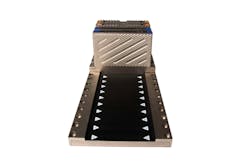Municipal water and wastewater utilities rely on automated controllers to keep their plants running. These are typically programmable logic controllers (PLCs), which can run 24/7 for years. Such longevity can lead to complacency and the false assumption that your system will run forever. However, sooner or later you will have to upgrade. Water municipalities approach PLC upgrade decisions in a few common ways.
Cost-driven upgrades
Most water managers work within strict budgets to keep labor, energy, treatment, pumping and chemical usage costs in control. In terms of raw performance, PLCs haven’t changed much over the past couple of decades. One strategy is to buy the least expensive controller that will do the job. If it breaks down, they will throw it away and replace it.
While this has worked well for some, some real risks exist. In addition to the system going down at an inopportune time and having to scramble to get it back up again, municipalities may miss out on additional performance and long-term costs savings that a more advanced system might deliver.
Cadillac strategy
On the other end of the spectrum are utilities seeking to future-proof their operations by buying the premium brand. They may spend $15,000 or more for this assurance, which in most cases delivers additional functionality such as productivity improvements and improved uptime.
Productivity improvement
Some higher-end PLC systems come with additional software features that can improve productivity. They may, for example, provide HMI screens for all operations and enable water managers, supervisors, engineers and even the mayor’s office to have a window on what is happening with the water supply. Such widespread sharing can improve collaboration in operations and maintenance as well as reduce reporting costs. Personnel can perform their roles more effectively with their own personalized screens.
The software push has also lead to the increased ability to view data on mobile clients such as smartphones and tablets. This meshes well with utility cost-cutting initiatives, such as those that might require staff to leave at 5 p.m. Some mobile applications enable monitoring of one plant from another plant, which can be especially valuable for night shift operations. However, PLC reliability has been taken for granted and little effort has gone into improvement and innovation.
Uptime
Increased software utilization introduces new potential vulnerabilities for PLCs. Cybersecurity represents an increasing threat to uptime for today’s water facilities. Water managers are increasingly worrisome about the possibility that their utility control systems might go down at any time without any warning, or even worse, undergo infrastructure damage that could cripple the utility for days or weeks. So far, addressing cyber security has been the job of municipal IT by way of firewalls, virtual private networks (VPNs), segmented networks, two-step authentication, frequent password changes and other initiatives to mitigate the risk of outside hackers causing damage to utility infrastructure. One utility, for example, has implemented up to six levels of firewalls to protect its control system network. Managing and maintaining these multiple layers of protection can be a challenge, especially given the need for staff to secure remote access from different departments such as plant operations, distribution and maintenance.
One promising solution, which could reduce the need for so many IT layers, is technology that embeds cyber protection at the system module level, reducing the need to add and maintain complex external layers. This technology has been in use in military and other industries, and it is now available to the water /wastewater industry at prices comparable to PLCs. Some utilities are considering this as an upgrade option that will help them sleep at night, improve performance and potentially reduce lifecycle costs.
Threats from other external forces, such as storms, are also ever-present. A weather incident that knocks out the power going to the facility could disrupt control if it loses contact with the radio telemetry supervisory control and data acquisition (SCADA) system that controls remote water tanks and pump stations throughout the service area. To keep their control systems running 24/7, a growing number of plants are upgrading their power systems to include uninterruptible power supplies (UPSs) and redundant power supplies for their control systems.
Many utilities need better monitoring of their power components including generators, UPSs, and batteries. Newer UPSs for control system PLCs have built-in monitoring capabilities, which can be critical in detecting a problem before it becomes an emergency. New "smart" power systems, however, can be compromised by a cyberattack, which is why some technologies mentioned earlier also embed security into the power components.
To upgrade or not
If your PLCs are running on borrowed time, you might be wise to consider an upgrade. Before you consider a simple one-to-one replacement, take a little time to see what options are available for productivity improvement, cybersecurity protection and other performance improvements. You might discover that for a comparable investment, you could get more value than you had anticipated and more assurance that when your customers turn on their taps, they will continue to get the water they need.
Dee Brown is a certified professional engineer and a principal in the engineering and systems integration firm Brown Engineers, which serves the automation needs of electric, water and sewer utilities. Brown Engineers is based in Little Rock, Arkansas. He can be reached at [email protected].
